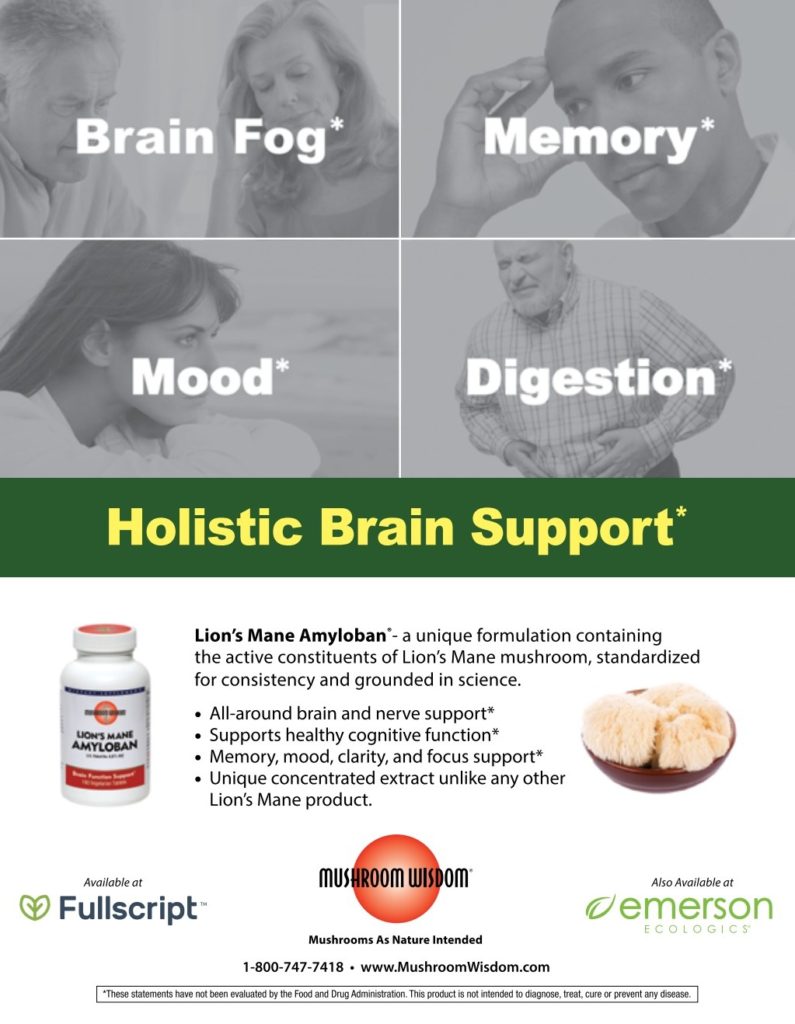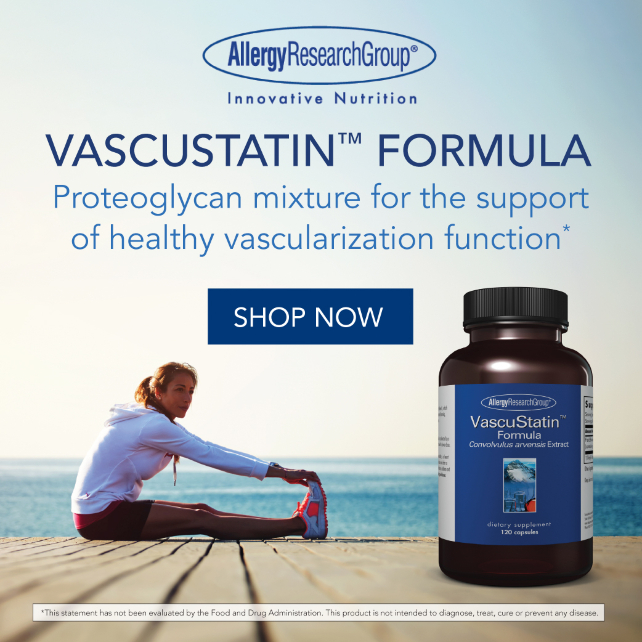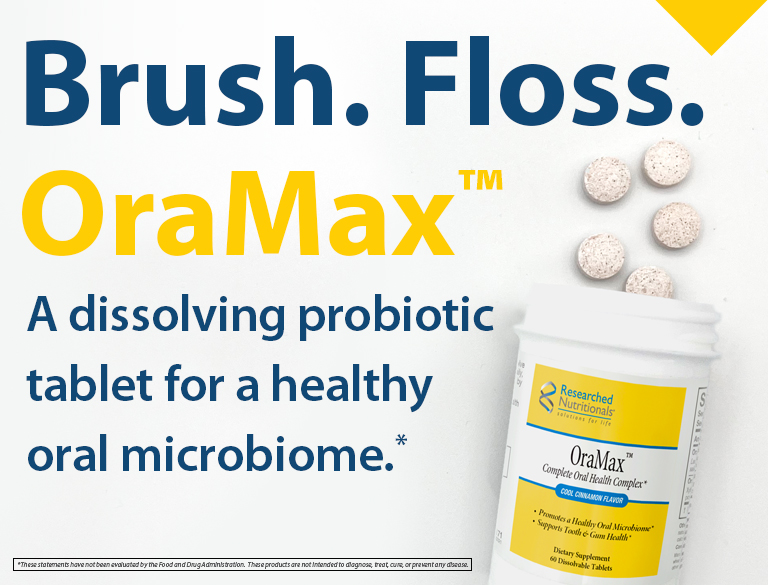by Dr. Paul S. Anderson, NMD
An excellent example of true therapeutic synergy was discovered in the earlier days of my IV research (under the NIH-funded Bastyr Integrative Oncology Research Center) in the combination therapy using Poly-MVA and dichloroacetate (DCA) for both IV and oral use. We will describe the basis of the synergy and the initial case series that was followed.
Before discussing the combined metabolic therapy we developed, it would be useful to discuss the components separately in regard to their use in cancer. Those components are DCA, retinol, hyperbaric oxygen, and finally Poly-MVA versus alpha lipoic acid.
DCA
DCA is a relatively small molecule, which has been used as treatment for lactic acidosis. It inhibits lactate formation and releases pyruvate dehydrogenase kinase from negative regulation, thus promoting pyruvate entry into the TCA cycle. This increases oxygen consumption and reactive oxygen species (ROS) formation while glycolysis and lactate formation are repressed.1 Non-cancerous human cells prefer this aerobic pathway for energy formation via the electron transport chain (ETC) use. Cancerous cells experience the Warburg Effect where most glucose is converted to lactate regardless of oxygen availability.2 Forcing a cancerous cell into TCA/ETC use thereby increases ROS formation and oxygen consumption.3
Cancers targeted in the published data included glioblastoma and are targeted due to their reliance on glucose metabolism, as well as the ability of DCA to cross the blood brain barrier.4 Other cancer cell types which have shown sensitivity are breast, prostate, colorectal, pancreatic and endometrial cancers.5
The most common toxicity is a dose dependent reversible peripheral neuropathy. Other reactions appear to be mediated by a slowing of glutathione activity via the GSTz pathway: “From the Abstract: Dichloroacetate (DCA) inhibits its own metabolism and is converted to glyoxylate by glutathione S-transferase zeta (GSTz). … Moreover, DCA-induced inhibition of tyrosine catabolism may account for the toxicity of this xenobiotic in humans and other species.”6 As, clinically, most toxicity effects appear to be mitigated either by slowing infusion, adding glutathione and nutrient support, or both, the use of such additional measures is indicated.
Retinoids
Retinoids (i.e., vitamin A, all-trans retinoic acid, and related signaling molecules) induce the differentiation of various types of stem cells.6 Nuclear retinoic acid receptors mediate most but not all the effects of retinoids. Retinoid signaling is often compromised early in carcinogenesis, which suggests that a reduction in retinoid signaling may be required for tumor development. Retinoids interact with other signaling pathways, including estrogen signaling in breast cancer. Retinoids are used to treat cancer, in part because of their ability to induce differentiation and arrest proliferation. “Retinoid research benefits both cancer prevention and cancer treatment.”7 Retinoic acid has been investigated extensively for its use in treating different forms of cancer not only in prevention but also in treatment: “Under normal circumstances in the body, retinoic acid does preventive work against cancer formation. After cancer formation, retinoic acid becomes an attacker to cancer cells, one that blocks their growth and division and also triggers their differentiation and death through specific pathways.”8
Hyperbaric Oxygen Therapy (HBOT)
HBOT is widely used as an adjunctive treatment for various pathological states, predominantly related to hypoxic and/or ischemic conditions. It also holds promise as an approach to overcoming the problem of oxygen deficiency in the poorly oxygenated regions of the neoplastic tissue. Occurrence of local hypoxia within the central areas of solid tumors is one of the major issues contributing to ineffective medical treatment. HBOT alone offers limited curative effect and is typically not used as monotherapy. In most oncology settings HBOT is used as a treatment along with other therapeutic modalities. An excellent review published in 2016 by Ostrowski et.al discusses the recent data regarding safety, efficacy and potential uses of HBOT in oncology and is a highly recommended resource.9
Poly-MVA
Poly-MVA is a redox molecule that facilitates energy charge transfer at the cellular level with regards to the mitochondrial respiratory chain; it can therefore protect (by accepting a radical electron) and provide energy (by increasing mitochondrial activity). Poly-MVA (also referred to as Pd-LA) is a polymer (liquid crystal) rather than a single molecule. It differs from free radical scavengers (e.g. alpha-lipoic acid) since there is no free lipoic acid or nutrients as they are irreversibly bound together in a polymer resulting in a molecule that is both fat- and water-soluble. Therefore, the polymer provides a unified redox reaction. In summary it is an extremely effective energy transferring molecule. Poly-MVA has been shown to be neuroprotective and helpful in supporting the mitochondrial complex.10-13
One reason to consider Poly-MVA in a combined therapy is mitochondrial support as this has the potential to aid metabolic therapies by strengthening normal cells and potentially weakening cancer cell metabolism. A study14 looking at the effects of Poly-MVA on mitochondrial dynamics revealed:
The level of GSH was also significantly improved and the level of lipid peroxidation was decreased significantly (p<0.05) by POLY-MVA. The results indicate that POLY-MVA is effective to protect the age-linked decline of myocardial mitochondrial antioxidant status. The findings suggest the use of this formulation against myocardial aging.
Alpha Lipoic Acid (ALA)
ALA has been used for many years in various cancer therapies. In a 2012 paper,15 the authors looked at neuroblastoma cells and potential for metabolic effect from both DCA and ALA. Their conclusions are revealing as to one potential mechanism by which ALA can have an anti-cancer effect:

These data suggests that LPA [ALA] can reduce (1) cell viability/proliferation, (2) uptake of [18F]-FDG and (3) lactate production and increase apoptosis in all investigated cell lines. In contrast, DCA was almost ineffective. In the mouse xenograft model with s.c. SkBr3 cells, daily treatment with LPA retarded tumor progression. Therefore, LPA seems to be a promising compound for cancer treatment.
The question arises: “Why consider Poly-MVA over ALA in a metabolic therapy?” In the past, our experience was to use ALA with DCA as well as other support nutrients. This strategy was typically able to mitigate the DCA side effects. The down sides of the combination therapy however were that it required multiple supplements and, in the IV form, required slower dose escalation of ALA due to potential side effects. Additionally, while ALA has some cancer metabolism effect, based on the data presented elsewhere in this paper and multiple patient responses, ALA did not have either the same level of synergy with DCA (as Poly-MVA) nor the potential metabolic benefits of Poly-MVA in combination with DCA. This led us to choose Poly-MVA as the neuroprotective and mitochondrial agent over ALA and support nutrients.
Why Combined Therapies?
The potential side effects of DCA (which can include neurological toxicity) and a deeper look into the mechanism by which DCA works led myself and Dr. Gurdev Parmar to postulate that Poly-MVA and DCA could have two areas of synergy if used together: One being a mutual anti-cancer benefit and the other to improve the safety and tolerance of the DCA. The first step after looking at the chemistry was to have a cell line study done to see if the synergy we saw “on paper” translated to cancer cell death. The short story is that both Poly-MVA and DCA had tumor kill but together they had additive benefit, and less DCA could be used with the same tumor kill.16 This was the best of both worlds with regard to a potential synergistic combination.
As we all know, what works on paper does not always work in the petri dish, and what works there doesn’t always translate to animal or human use. Because of this I (from prior use of DCA and Poly-MVA) knew how to administer both agents safely so I knew that I could provide the therapy without any risk other than risks common to other IV therapies. I did however have to select a group of people with advanced cancer that had failed all therapies (standard oncology therapies and natural therapies) and consented to this as a trial of unknown outcome (in oncology research a “salvage therapy trial”).
We began with a small group of patients, acquiring them one by one based on the above criteria, and over the course of two years implemented the therapy. The original case series is summarized in the table (left) and was part of the original study, but has not been published separately since reported (in the context of the whole trial outcomes) at the Society of Integrative Oncology.17 For reference, many times things discovered in studies take years to be published, if at all.
The basis of the therapy is outlined in the DCA and Poly-MVA sections above, but essentially the goal is to attack the cancer cell where it is weakest via its unique (but impaired) metabolism relative to normal human cells.18-24 I and colleagues have used this therapy, and the newer versions of it, many times in the years since and have had similar results. Of course, nothing works for everyone, but this combination has certainly improved overall cancer outcomes in our clinical experience. It should be noted the original protocol involved dietary changes (to a low carbohydrate or ketogenic diet) and a small group of oral supplements.
 It should be of significant note that the only difference in the “disease regression” group and the other groups in the table above was that the “disease regression” group were the most stringent on their diet changes. This became a reason to increase the focus on the dietary portion of the intervention in future patients.
It should be of significant note that the only difference in the “disease regression” group and the other groups in the table above was that the “disease regression” group were the most stringent on their diet changes. This became a reason to increase the focus on the dietary portion of the intervention in future patients.
I had never seen these results when using DCA alone, so in my opinion the synergy seen is the petri dish worked in humans. Additionally, the rate of side effects from the DCA was drastically reduced, such that nobody since has had to drop out of the therapy due to DCA-related side effects. Overall, this is one of the truly big advances in integrative cancer therapies in the past twenty years.
In moving this therapy forward, I encountered the work that Dominic D’Agostino (of the University Of South Florida School of Medicine) was doing on metabolic oncology therapies in 2014 at the International Hyperbaric Medical Association.25 His work with animals and mine in humans had many crossover points. The main addition when I looked at both protocols was to combine hyperbaric oxygen therapy (HBOT) and exogenous ketones with my protocol.
Since 2014, we have treated many Stage-4 cancer patients with the combined metabolic therapy mentioned below. It has been safe and overall very effective in slowing disease, causing regression or stabilizing advanced cancer.
I believe based on the experiences of the past seven years with this evolving therapy that it holds a significant place as an effective intervention in advanced cancers. And while nothing certainly works universally in advanced cancer, a combined metabolic protocol should be considered as a potential therapy in all cases.
Combined Metabolic Oncology Therapy
Protocol Overview:
1. Dietary Intervention
2. Use of supplemental retinol
3. Use of intravenous Poly-MVA and DCA
4. Addition of hyperbaric oxygen therapy (HBOT)
Specific Protocol:
1. Dietary Intervention:
- Patients are on a ketogenic or (at least) low carbohydrate diet.
- When calculating carbohydrates use ONLY the “net carbohydrate” values (Net carbohydrate is [Total Carbohydrate – Fiber]). Ultimate ketone goal in blood is over 3.0 millimolar.
- In either diet the patient needs to consume high-fiber vegetables.
- Most juices and smoothies have too much sugar and cannot be used.
- Oral ketone supplements starting at 2.5 grams BID and increasing to 5 grams BID as tolerated. [35 – 70 mg/Kg pediatric dose BID]
- Daily intermittent fasting should be followed with the last meal ending at 7:00 PM and the first meal at 8:00 AM or after.
- If patients are losing weight/cachexic, have them consume 10-20 mL of MCT [1-5 mL pediatric] oil every 1 to 2 hours. They may need bile salts as support. Then look at their caloric macronutrient levels and adjust the fat up and potentially some increase in protein.
- Note that too much protein will trigger glucogenic amino acid conversion and so this should be avoided.

2. Retinol Rx: Patients are given vitamin A: 25,000 IU Retinol [350 IU/Kg pediatric] in a fat soluble (not carotenoid) form orally once daily. If patient has AST/ALT over 300, decrease to 5000 IU daily.
3. Administration of Poly-MVA and DCA intravenously as outlined below. The Poly-MVA IV is always first then the DCA IV follows directly after the Poly-MVA.
The first IV is a test dose:
- Poly-MVA 10 mL in 500 mL Normal Saline [0.1 mL/Kg for pediatric – in 100 mL NS] and then DCA 10 mg/kG in 500 mL Normal Saline [100 -250 mL in pediatric]
- Note: For both above, you may substitute 0.45 saline in dehydrated patients.
The following IV’s are at full dose:
- Poly-MVA 25 mL in 500 mL Normal Saline [0.5 mL/Kg for pediatric – in 100 mL NS] and then DCA 20 mg/kG in 500 mL Normal Saline [100-250 mL pediatric]
- Note: For both above, you may substitute 0.45 saline in dehydrated patients.
- In aggressive cases, doses of Poly-MVA may be titrated up to 40 mL [0.5 mL/Kg] and DCA may be titrated up to 30-40 mg/Kg – if tolerated.
4. Use of concurrent HBOT:
- We begin with a 1.3 to 1.5 ATA trial, bottom time 60 minutes with O2 by mask. Dive may be increased to 1.5 ATA X 60 minutes. At higher ATA air breaks are required: Once at depth use O2 by mask for 15 minutes then 10 minutes air break then 15 minutes O2 by mask.
- SCHEDULE: Minutes 1-15 with mask; Minutes 15-25 without mask; minutes 25 to 40 with mask minutes 40 to 50 without mask and minutes 50-60 with mask.
- With the full protocol above, two HBOT dives per week are optimal.
5. Lab testing:
- Baseline standard labs including chemistries with eGFR and ALT, AST and CBC. Other labs as indicated for the patient.
- Draw all follow up eGFR and liver functions on Sunday or Monday AM before any IV’s are done. If not, the renal functions can be falsely altered.
6. Duration and frequency of therapy:
- In the case series mentioned above and patients since, we have noted a variety of response patterns and a variety of treatment duration requirements.
- Frequency of treatment:
- If using the IV protocol, we administer the Poly-DCA twice to three times weekly.
- If using the oral protocol, we have the patient administer the Poly-DCA four days weekly.
- Supplements and diet changes are daily, unless noted above.
- Duration of treatment:
- The first re-assessment is normally completed at eight weeks unless there is an objective test (PET etc.) within 12 weeks and then it is extended to 12 weeks.
- Assessment includes any disease specific markers, physical exam, general and quality of life symptoms, non-specific markers (e.g. HsCRP), imaging if indicated and any patient specific finding or marker indicated.
- Re-assessment includes any pertinent positive findings in the above list.
- If therapy is improving quality-of-life measures and/or any of the above clinical markers, we recommend continuing in one of the following ways:
» If disease is stable and clinical indicators dictate, a maintenance schedule is designed. This is typically two to three days weekly oral Poly-DCA protocol with all supplements and diet changes continuing daily.
» If improvements are positive but the underlying disease is aggressive, we will recommend continuing the primary therapy schedule above and re-assessing in 8-12 weeks.
- Continued dietary alterations:
- As the dietary alterations were key to success in the original case series of patient response, we advise patients to continue the diet changes long term.
- Same recommendation for the supplements.
References
1. Stockwin LH, et al. Sodium dichloroacetate selectively targets cells with defects in the mitochondrial ETC. Int J Cancer Online. 7 June 2010.
2. Vander Heiden MG, et al. Understanding the Warburg Effect: The Metabolic Requirements of Cell Proliferation. Science. 2009;324: 1029.
3. Lopez-Lazaro M. A new view of carcinogenesis and an alternative approach to cancer therapy. Mol Med. March-April 2010;16(3-4) 144-153.
4. Michelakis D, et al. Metabolic Modulation of Glioblastoma with Dichloroacetate. Sci Transl Med 12 May 2010; 2 (31).
5. Stockwin LH, et al. Sodium dichloroacetate selectively targets cells with defects in the mitochondrial ETC. Int J Cancer Online. 7 June 2010.
6. Cornett R, et al. Inhibition of glutathione S-transferase zeta and tyrosine metabolism by dichloroacetate: a potential unifying mechanism for its altered biotransformation and toxicity. Biochem Biophys Res Commun. 1999 Sep 7;262(3):752-6.
7. Tang XH, Gudas LJ. Retinoids, retinoic acid receptors, and cancer. Annu Rev Pathol. 2011;6:345-64.
8. Chen M-C, et al. Retinoic acid and cancer treatment. BioMedicine. 2014;4(4):22.
9. Stępień K, Ostrowski RP, Matyja E. Hyperbaric oxygen as an adjunctive therapy in treatment of malignancies, including brain tumours. Medical Oncology (Northwood, London, England). 2016;33(9):101.
10. Menon A, Nair K. POLY MVA – A dietary supplement containing α-lipoic acid palladium complex, enhances cellular DNA repair. International Journal of Low Radiation. 2011;8: 42–54.
11. Ramachandran L, Krishnan CV, Nair CKK. Radioprotection by α-Lipoic Acid Mineral Complex formulation, (POLY-MVA) in mice. Cancer Biotherapy and Radiopharmaceuticals. 2010; 25(4); 395-399.
12. Menon, A., Krishnan, C.V., Nair, C.K.K. (2009) Protection from gamma-radiation insult to antioxidant defense and cellular DNA by POLY-MVA, a dietary supplement containing palladium lipoic acid formulation. Int. J. Low Radiation, Vol. 6, No.3, 248-262.
13. Menon A, Krishnan CV, Nair CKK. Antioxidant and radioprotective activity of POLY-MVA against radiation induced damages. Amala Cancer Bulletin. 2008;28:167-173.
14. Sudheesh NP, et al. Effect of POLY-MVA, a palladium alpha-lipoic acid complex formulation against declined mitochondrial antioxidant status in the myocardium of aged rats. Food Chem Toxicol. 2010 Jul;48(7):1858-62.
15. Feuerecker B, et al. Lipoic acid inhibits cell proliferation of tumor cells in vitro and in vivo. Cancer Biology & Therapy. 2012;13(14):1425-1435.
16. Antonawich F. “Cell death assay (U-87 glioblastoma cell line)” provided by Garnett McKeen Laboratory, Inc.
17. Standish LJ, Anderson PS, et.al., “Can Integrative Oncology Extend Life in Advanced Disease?” 10th International Conference of the Society for Integrative Oncology (SIO): Abstract 79. Presented October 21, 2013.
18. Seyfried TN, et al. Cancer as a metabolic disease: implications for novel therapeutics. Carcinogenesis. 2014;35(3):515-527.
19. Gogvadze V, Orrenius S, Zhivotovsky B. Mitochondria in cancer cells: what is so special about them? Trends Cell Biol. 2008;18(4):165-173.
20. Miles KA, Williams RE. Warburg revisited: imaging tumour blood flow and metabolism. Cancer Imaging. 2008;8:81-86.
21. Collins FS. Contemplating the end of the beginning. Genome Res. 2001;11(5): 641-3.
22. Escuin D, Simons JW, Giannakakou P. Exploitation of the HIF axis for cancer therapy. Cancer Biology and Therapy. 2004;3:608-11.
23. Bacon AL, Harris AL. Hypoxia-inducible factors and hypoxic cell death in tumor physiology. Annals of Medicine. 2004;36:530- 9.
24. Garnett M. “Palladium Complexes and Methods for Using Same in the Treatment of Tumors and Psoriasis,” U.S.Patent, No. 5,463,093, Oct.31. (1995).
25. Poff AM, et al. Non-Toxic Metabolic Management of Metastatic Cancer in VM Mice: Novel Combination of Ketogenic Diet, Ketone Supplementation, and Hyperbaric Oxygen Therapy. PLoS ONE. 2015;10(6): e0127407.



 Paul S. Anderson, NMD, is medical director of Advanced Medical Therapies in Seattle, Washington, a clinic focusing on the care of patients with cancer and chronic diseases. Former positions include professor of pharmacology and clinical medicine at Bastyr University and Chief of IV Services for Bastyr Oncology Research Center. He is a graduate of National College of Natural Medicine (Portland, Oregon) and began instructing classes at naturopathic medical schools in the early 1990s. He is co-author of the Hay House book Outside the Box Cancer Therapies with Dr. Mark Stengler as well as a co-author with Jack Canfield in the anthology Success Breakthroughs. He is a frequent CME speaker and writer and has extended his educational outreach through his CE website
Paul S. Anderson, NMD, is medical director of Advanced Medical Therapies in Seattle, Washington, a clinic focusing on the care of patients with cancer and chronic diseases. Former positions include professor of pharmacology and clinical medicine at Bastyr University and Chief of IV Services for Bastyr Oncology Research Center. He is a graduate of National College of Natural Medicine (Portland, Oregon) and began instructing classes at naturopathic medical schools in the early 1990s. He is co-author of the Hay House book Outside the Box Cancer Therapies with Dr. Mark Stengler as well as a co-author with Jack Canfield in the anthology Success Breakthroughs. He is a frequent CME speaker and writer and has extended his educational outreach through his CE website 


